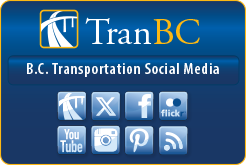Disaster Response Routes
In an emergency, critical seconds can save lives. Disaster response routes are designated for use by emergency personnel during an emergency or disaster situation such as an earthquake.
Transportation networks can be significantly affected during an emergency or disaster.
Establishing traffic control measures and disaster response routes might be necessary to:
- Save lives, property and infrastructure
- Maintain the distribution of essential goods and supplies
Disaster response routes are used to expedite movement for official purposes in response to an emergency or disaster. The routes may be chosen at the time of the emergency to fit the situation.
If you find yourself on a disaster response route, exit the route as soon as possible to make way for emergency response personnel. Obey traffic signs and traffic control persons at all times.
Learn how disaster response routes fit into disaster transportation strategies in B.C.
Using Disaster Response Routes
At minimum, the following identification are required to use these routes when activated:
- Canadian or provincial government issued photo identification (e.g. driver’s licence, BC Services Card, Canadian passport, Protocol Identity Card)
and - Employment identification (e.g. business cards or other identification issued by the employer).
Current Road Conditions
Check media and listen to the radio for updates to find out with routes are open to non-emergency traffic.
- DriveBC is the most current source of highway conditions (@DriveBC on Twitter)
- Current Road Advisories and Information
Related Links

Contact information
Contact us for information about disaster response routes.
DRR.Info@gov.bc.ca

